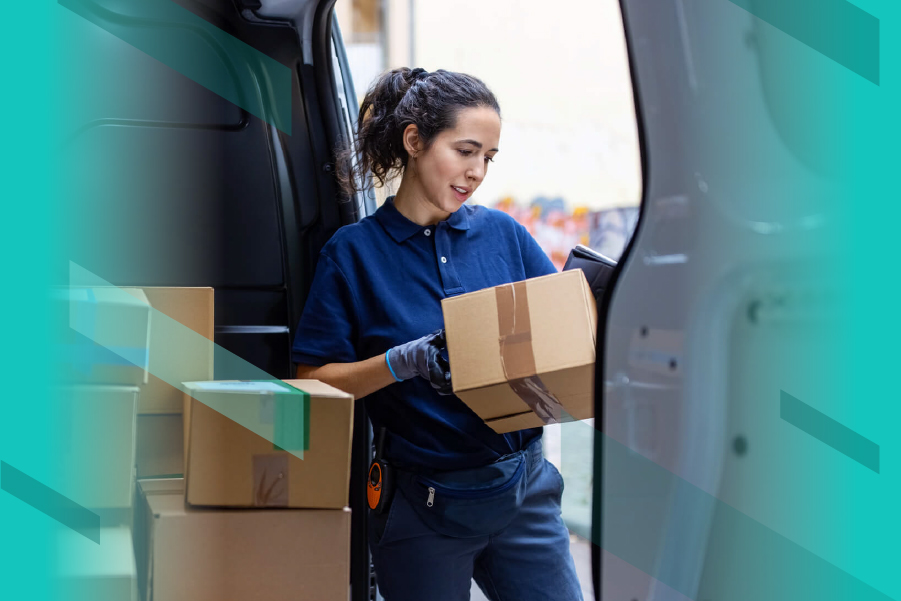How address verification can help solve the UK delivery driver crisis

Delivery work was a lifeline to many in the wake of the pandemic, with searches for Amazon delivery jobs alone surging by 500% since spring 2020. It has been a different story in 2021, though. Many of those drivers have returned to their old jobs or have fallen victim to the pingdemic. As such, many retailers who offer home delivery are severely short of workers. Retailers such as Tesco, Aldi, and Marks & Spencer are even offering bonuses or vastly increased salaries to entice delivery drivers.
Jack Beaman, Chief Executive, Indeed Flex, states:
“...as lockdown restrictions ease, many of the temporary drivers who kept Britain moving in its time of need are boomeranging back to their old jobs.”
According to Indeed Flex, the industry has seen a 28.8% drop in applications for delivery driver roles from June to March.
What is the impact?
Delivery drivers and delivery efficiency have a significant impact on customer service. In our Fixing Failed Deliveries report we discovered that customers are still wary of shopping online due to problems with delivery. 56% say they would increase their level of online shopping if they felt more confident about deliveries arriving on time, but over 7 in 10 people will refuse or be reluctant to shop with a brand again if their delivery is late or fails.
Underpinning these concerns is the fact that delivery has grown exponentially in the wake of the pandemic. 87% of UK households made purchases online in 2020, increasing by 6.1% from the previous year – the sharpest yearly increase in the past 11 years. These habits could well stick, as 51% state that they are shopping online more as a result of the pandemic.
How can delivery services improve without recruiting new employees?
To deliver goods to a customer on time, driver drivers are of course dependant on accurate address information. To capture this information customers are responsible for inputting their details accurately, but should user error prevail, mistakes can seriously impact delivery efficiencies. By using address capture and verification tools at the checkout, eCommerce companies can ensure that they capture the correct address with each order, helping delivery drivers to maximise their time delivering goods instead of going around the houses.
Address capture works by suggesting and predictively typing ahead an address in real-time as the customer types in their address. Customers typing in their address can find theirs in as few as three keystrokes, with results returned in just 150 milliseconds. Customer errors are also accounted for, as ‘fuzzy matching’ considers common errors and misspellings in relation to our database and makes sure customers are presented with the right address. To increase accuracy, address capture also uses additional data such as geocodes and UPRN’s to give a greater deal of accuracy.
Our Fixing Failed Deliveries report found that 24% of eCommerce organisations do not deliver more than 1 in 10 deliveries at the first attempt. The report also found that when addresses are inaccurate or incomplete, 41% of deliveries experience delays, and 39% fail altogether. Additionally, 55% of consumers believe that the retailer will fix any mistakes. Not only can these errors be costly in terms of redelivery fees, but it also costs valuable time in a period when delivery drivers have little to spare.
However, when addresses are formatted and spelt correctly, failed deliveries drop significantly. By using Loqate’s address capture and verification solution, eCommerce organisations can reduce failed deliveries by 70%, which will go a long way to freeing up time for existing delivery drivers and reduce the need for companies to chase recruits.
By using Loqate, Sainsbury’s were able to support delivery drivers during the pandemic at a time when demand was high. By providing Royal Mail PAF data combined with geolocation data Sainsbury’s were able to locate a delivery destination more accurately, allowing them to ‘scale-up and meet demand’ as it sought to make deliveries within every hour timeslot.
To try address verification for yourself, click here for free trial.